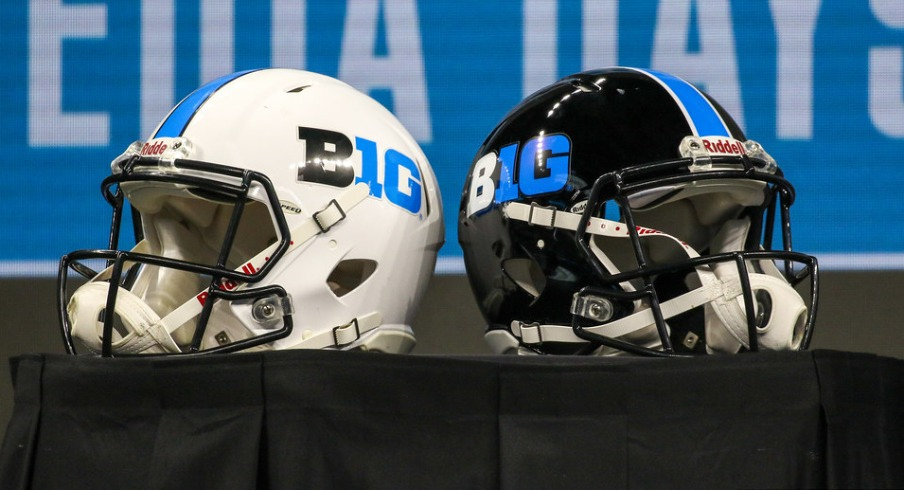2021 was bad for a lot of reasons, and in the grand scheme of things "loss of athletic department revenue" isn't super high on that list.
Still, it'd be understandable if the various athletic department directors of the Big Ten were at least a little bit nervous wondering about what sports revenues would look like in a post-COVID world. Would fans come back to stadiums? Would broadcasting contracts (and subsequent disbursements) be as robust? Would donors be as willing to empty their pocketbooks? And, most importantly, would those things all be sufficient to allow athletic departments that often turn little to no profit to continue to sponsor non-revenue sports?
The answers to those are "mostly", "yes", "depends where you're at", and "pretty much, although check back in five years" and while it isn't quite back to business as normal for everyone, for as disruptive as the last three years have been it's a little surprising how well Big Ten schools have weathered the storm.
Public-school athletics departments in the Southeastern and Big Ten conferences each collectively combined for more than $2 billion in operating revenue during their 2022 fiscal years, a USA TODAY Sports analysis shows.
The numbers for those two conferences and the others in the Power Five showed a significant, expected rebound from 2021 amounts that were heavily impacted by the COVID-19 pandemic.
USA Today writer Steve Berkowitz also notes that when adjusting for inflation, spending and revenues haven't yet hit pre-pandemic levels, and as he also astutely points out, this is a problem that has impacts more for the have-nots (even in the Power Five, and even among schools that benefit from massive conference broadcasting deals) than the haves. USA Today has released their analysis of athletic department revenues and expenditures, and the results bear this out.
OHIO STATE
Ohio State's financial situation, as reported, is very similar to what can be seen at several other large universities with athletic departments that operate mostly independent of public sources of revenue. Ticket sales in 2022 were down from 2020 levels, at $59.6 million compared to almost $66 million. But at the same time, "contributions" (which USA Today defines as, in part, "[A]mounts received directly from individuals, corporations, associations, foundations, clubs or other organizations for the operations of the athletics program") were up almost $15 million, as rights and licensing and "other" revenues were up by several million each.

What this amounted to was the Ohio State athletic department coming in with $251.6 million in revenue in 2022 compared with $233.8 million in 2020, buoyed strongly by outside contributions despite a decline in ticket sales. This is a similar pattern that played out at Michigan, Penn State, and Michigan State, among others, and it's clear that athletic departments with a huge alumni and fan base to draw from were able to capitalize on pent-up demand in ways that extended beyond just getting butts in seats.
But even that seems to be turning a corner, at least at Ohio State, which just reported its highest season ticket sales in over a decade.
MARYLAND
On the flipside is the athletic department at Maryland, which brought in approximately $15 million more in 2022 than in 2020 (but less than what they made in 2019), and that increase was largely on the back of almost $12 million in student fees and an increase in rights/licensing money. Excepting 2021, ticket sales were at their lowest since 2013, and while contributions were up slightly from 2020, they were still lower than every other year since 2010.
This pattern of flat or declining outside contributions at smaller athletic departments, which can amount to 10-20% of an athletic departments' revenues, isn't crippling for places like Maryland, or Iowa, or Purdue. But it is a sign of continued instability, and even more so at places like Louisiana-Lafayette, over $5 million in the red, with school funds amounting for fully half of athletic department revenue.
With all of that said, the Big Ten as a whole is an absolute cash cow. Disbursements are huge, at almost $60 million per school, and assuming that the ink ever dries on the new contracts, that number should go up in the coming years. One university that has to be happy with this arrangement is UCLA, especially given that all areas of revenue have been in a state of flux (to put it mildly) since 2019:
Over the last three fiscal years, UCLA’s athletic department had run up a $102.8-million deficit that figured only to worsen given the school’s sagging football attendance and paltry Pac-12 payouts that lagged behind its major conference counterparts. Now it’s conceivable that the Bruins could receive $100 million from the Big Ten per year if the expanded conference can snag the projected $1-billion media rights deal that’s set to begin in 2024.
As the LA Times notes, that should be enough to save Olympic sports at UCLA, and an important reminder that the rising tide of the Big Ten is strong enough to help even shaky institutions under its umbrella stay solvent.
After an extremely uncertain few years, that's very welcome news for college sports in the conference.


